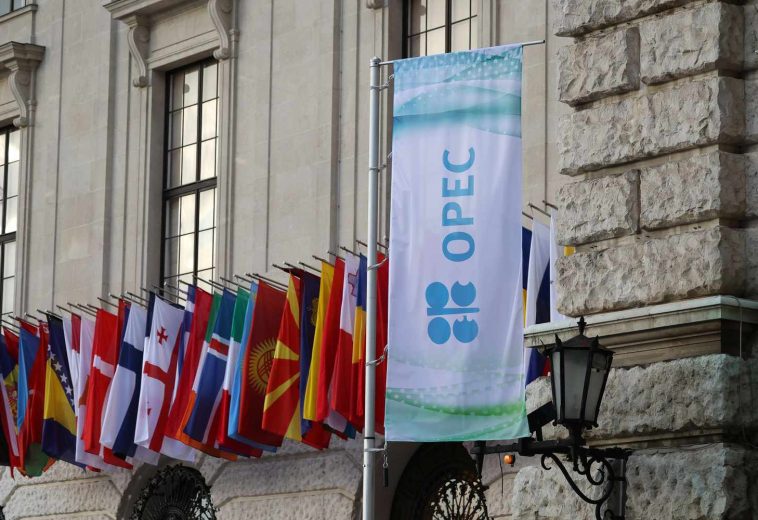A severe shortage of cocoa beans has caused prices of chocolate to soar to steep levels. The global chocolate industry, valued at over $100 billion annually is affected by climate change issues, fluctuating commodity prices, and growing consumer demand in the supply chain. In 2022, the global chocolate market was valued at USD 115.80 billion.
West Africa, particularly Nigeria, Ghana, Cameroon, and Ivory Coast is one of the major contributors to the global cocoa industry, producing 75% of the world’s cocoa beans. Dating back to the colonial era when European powers, especially Britain and France, promoted cocoa cultivation to meet the rising chocolate demand in Europe. They introduced high-yielding cocoa varieties and established large plantations.
Today, cocoa remains a major cash crop for the region, employing around 20 million people. On the surface, record-high cocoa prices of $10,000 per ton should be a boon for West African farmers. However, local challenges threaten to undermine this potential windfall.
In Ivory Coast, where cocoa production accounts for 14% of GDP, the country produces 40% of the world’s cocoa beans. Millions of Ivorians depend on cocoa for their livelihood, yet many farmers struggle due to historically low farmgate prices. A Fairtrade report reveals that the average Ghanaian cocoa farmer earns just $6 from a $100 bar of chocolate.
Despite West Africa’s crucial role in the global cocoa industry, its farmers receive a disproportionately small share of the profits. This lack of resources hampers their ability to invest in their farms or combat diseases, leading to older, less productive trees and increased vulnerability to threats like the swollen shoot virus. A cycle of low prices and neglect has contributed to the current shortage and jeopardized long-term sustainability.
Similarly, Ghana, which supplies 20% of the world’s cocoa, faces low farmgate prices and widespread farmer poverty. This has driven some farmers to lease their land to illegal miners, degrading the soil and making it unsuitable for cocoa cultivation. In 2018, the Ghana Cocoa Board (Cocobod) used part of a $600 million loan from the African Development Bank to rehabilitate aging plantations and combat diseases. Last year, they established a task force to protect cocoa farms from the impacts of illegal mining.
The situation also highlights the persistent decline in cocoa production in other West African nations. Nigeria’s cocoa industry, once a major player, tells a story of missed opportunities. In the 1960s, Nigeria was the second-largest cocoa producer, with cocoa making up over 50% of exports in the 1970s and over 60% in 1980. However, policies in the 1970s and 80s that prioritized oil production over agriculture stunted the cocoa sector’s development.
Many Nigerian cocoa trees became old and less productive, and diseases like the swollen shoot virus further reduced yields. By 1998, Nigeria’s share of the global cocoa market had fallen from 49% in 1989 to 22%. Poor infrastructure, such as inadequate transportation networks, further hampered the cocoa supply. Today, Nigeria produces 6% of the world’s cocoa, a significant global contribution but a shadow of its former capacity.
This crisis presents a golden opportunity that West Africa cannot afford to miss. An opportunity to strengthen its role in the chocolate industry and leverage its position as a major producer to push for fairer trade models.
Historically, West African countries have exported raw cocoa beans, missing out on the higher profits associated with processing and manufacturing chocolate products. This crisis provides an impetus to shift towards value addition. By investing in local processing facilities, West Africa can produce semi-finished and finished chocolate products. This not only increases revenue but also creates jobs and develops local expertise. Countries like Ghana and Côte d’Ivoire have already started this transition, and with the right policies and investments, others can follow suit.
Expanding the range of cocoa products can also open new revenue streams. Beyond traditional chocolate, there is growing demand for cocoa butter, cocoa powder, and specialty products like organic and fair-trade chocolate. By catering to niche markets, West African producers can command premium prices and tap into global trends favoring ethical and sustainable products. Emphasizing quality and certifications can further differentiate West African cocoa in the competitive global market.
One of the most significant opportunities lies in the adoption of sustainable agricultural practices. Climate change threatens cocoa production, with rising temperatures and changing rainfall patterns reducing crop yields. West African countries can lead the way by investing in climate-resilient agricultural practices. Governments, in collaboration with private sector stakeholders, can create an enabling environment for investment in infrastructure, research, and development. Investments in transportation, storage facilities, and technology can reduce post-harvest losses and improve the overall efficiency of the supply chain. Additionally, research into disease-resistant cocoa varieties and innovative farming techniques can bolster production.
READ ALSO: Niger-US Relations: A Historical Journey
Empowering cocoa farmers through robust cooperative structures can enhance productivity and improve livelihoods. Cooperatives can provide farmers with better access to resources, training, and market information. They can also negotiate better prices and terms with buyers, ensuring that a fair share of profits reaches the producers. Strengthening these cooperatives can lead to more resilient and empowered farming communities, capable of weathering market fluctuations and climatic challenges.
Regional cooperation and favorable trade policies are crucial for maximizing the benefits of cocoa production. West African countries can work together to harmonize standards, reduce trade barriers, and create a unified front in international negotiations. By collaborating, they can enhance their bargaining power and ensure fairer prices on the global market. Furthermore, partnerships with international organizations can provide technical assistance, funding, and market access.


